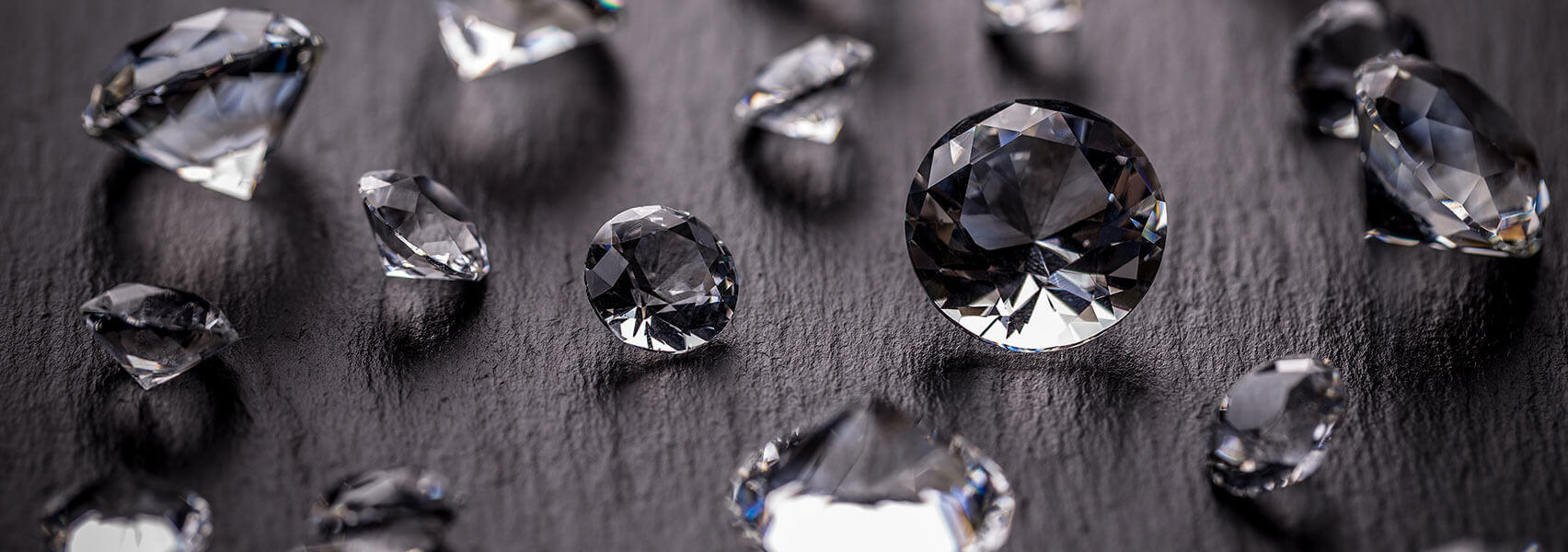
Diamond Education
We are delighted to present this latest information on buying diamonds from Long Jewelers. Since selecting a diamond for any occasion can be mystifying, we have put this information together to give you the knowledge needed to take the questions out of buying diamonds. We know an educated and informed consumer is a confident and satisfied customer.
Whether you’re purchasing your first diamond or have purchased diamond jewelry before, this information gives you all the important facts about the 4 C’s of diamonds: Cut, Color, Clarity and Carat Weight.
With this information in hand, you’ll be able to compare quality and value, and feel confident that you’re choosing a diamond from Long Jewelers that you’ll treasure forever.
Cut
The word “cut” is usually mistaken for the shape of a diamond, thanks to the relationship between the two factors. When talking about the 4 C’s, the cut refers to how well a diamond meets the ideal proportions that diamantaires have assigned to a shape. These proportions have been discovered over time as the best way to have light captured and refracted from diamond shapes. For every diamond shape, the cut is very exacting, and deviations from the standard can cause otherwise gorgeous diamonds to appear dark or lifeless. If you’re a lover of a diamond’s fire and scintillation, cut is an important C to note.
The GIA (Gemological Institute of America) sets important standards for the 4 C’s in the United States, and when it comes to cut, the GIA classifies this quality according to a scale that goes from “excellent” to “poor.” Using a seven-point system that includes brightness, fire, scintillation, weight ratio, polish, symmetry, and durability, a diamond’s cut will be graded accordingly.
Color
Diamonds are classified as either “white” (clear) or “fancy” by the GIA. Fancy diamonds are those whose color is vibrant enough that they must be graded on their own scale, but white diamonds are a different issue. They’re graded on how little color they display. While diamonds are, on their own, perfectly clear, they’re created in nature rather than a laboratory. Most diamonds will pick up some foreign material during their formation!
Because nitrogen is one of the most common elements on Earth, most diamonds will carry some traces of it, giving the stone a yellow or off-brown color. The commonness of nitrogen also means that truly colorless white diamonds extraordinarily costly!
The GIA categorizes color on a scale that begins with “D” and goes to “Z,” with D diamonds completely colorless and Z diamonds displaying extremely visible yellow tones.
Clarity
Clarity is deeply related to color insofar as both C’s deal with material being trapped in diamonds during their formation. But while color is affected by invisible things like radiation or gasses, clarity is affected by solid materials being trapped in the diamond or breaks in the crystal structure of the stone. Cracks, for example, as well as bubbles, cleavages, and crystal irregularities all count as “inclusions” that affect the clarity. The most common foreign materials trapped inside diamonds include black carbon, silica, garnets that have grown inside the stone, and “salt and pepper” iron.
Inclusions are generally unwelcome because they alter the way light travels through a diamond, making a stone “dirtier-looking” or less luminous. The GIA grades clarity on a scale that goes from F (flawless) to I3 (extremely visible inclusions), and graders use a 10x magnification loupe to determine the placement, severity, and density of inclusions in a given diamond.
Carat
As with cut, the casual use of the word “carat” refers to the size of a diamond, but in a jewelry setting, carat means the weight of a diamond. One carat weighs exactly 0.2 grams, and each carat is made up of 100 points. As an example, if you hear about a 3.5 carat diamond, it’s equivalent to 350 points or 0.7 grams. When you’re shopping for a diamond, remember that while two shapes of diamond can have the same carat weight, they can have that weight spread out in different ways. A compact shape, like a round-cut diamond, will always appear smaller than a long shape, like the emerald cut or marquise cut.
If you’d like to learn more about the 4 C’s or what you can expect from the loose diamonds and diamond jewelry we offer at Long Jewelers, contact us at (757) 498-1186 or visit us at our Virginia Beach, Virginia showroom today!



